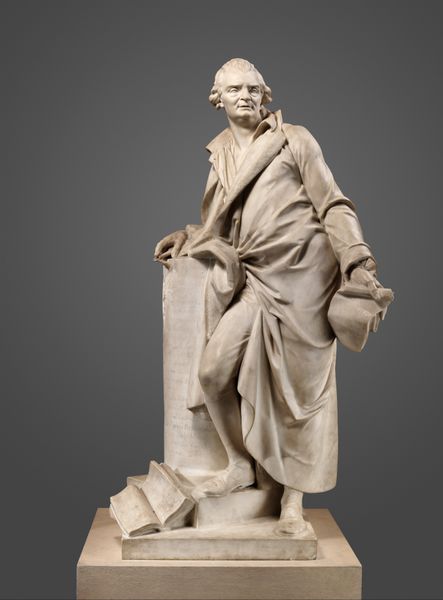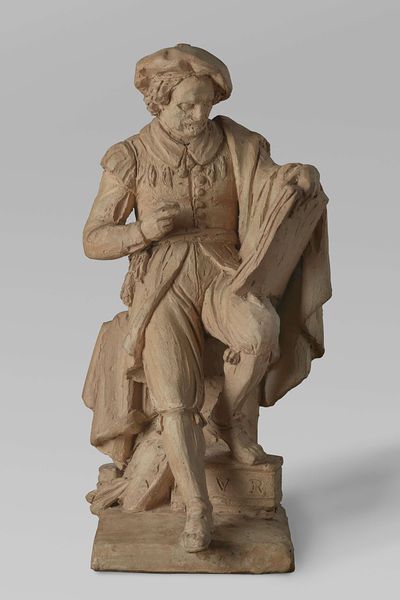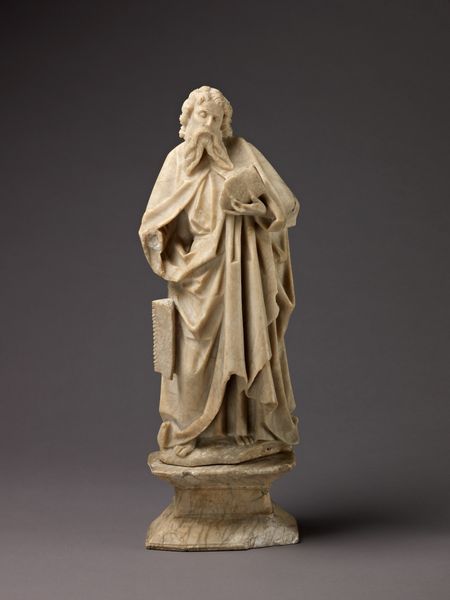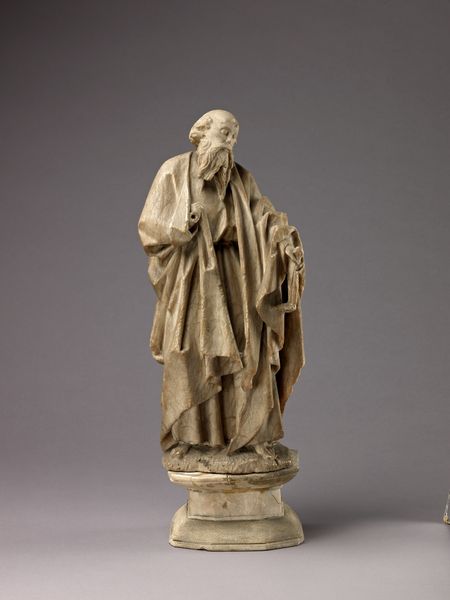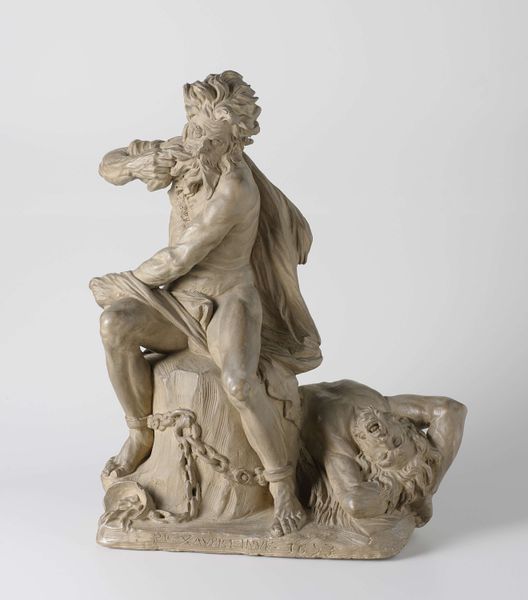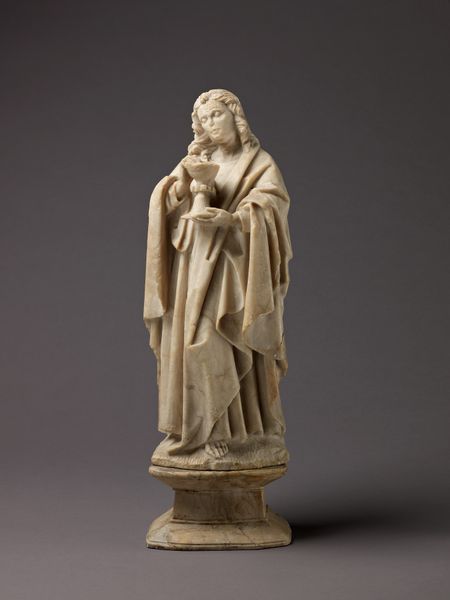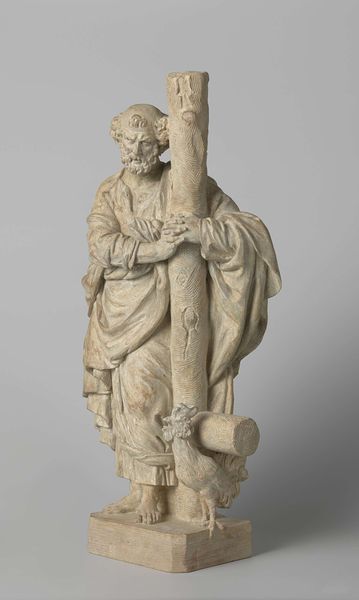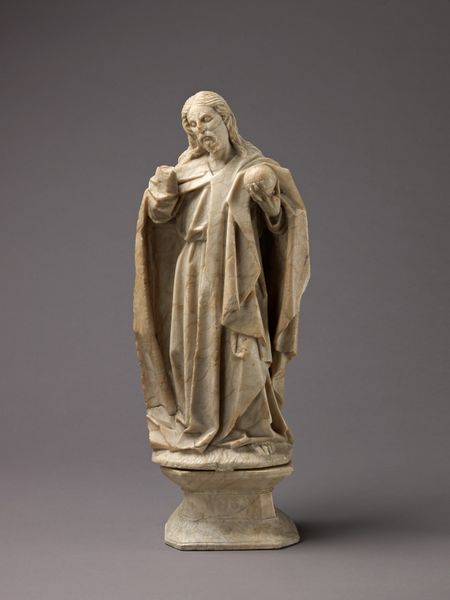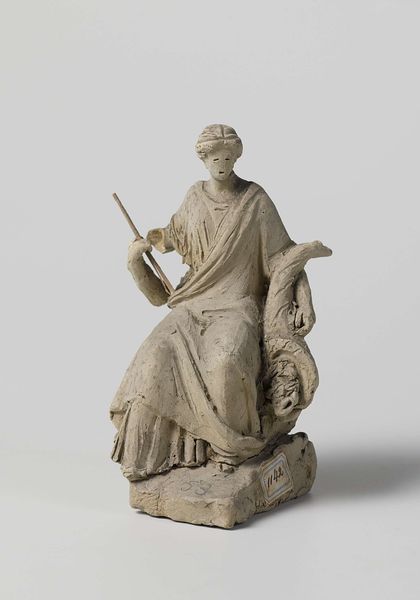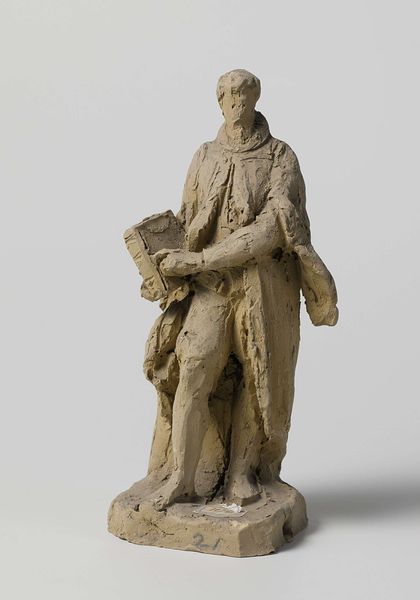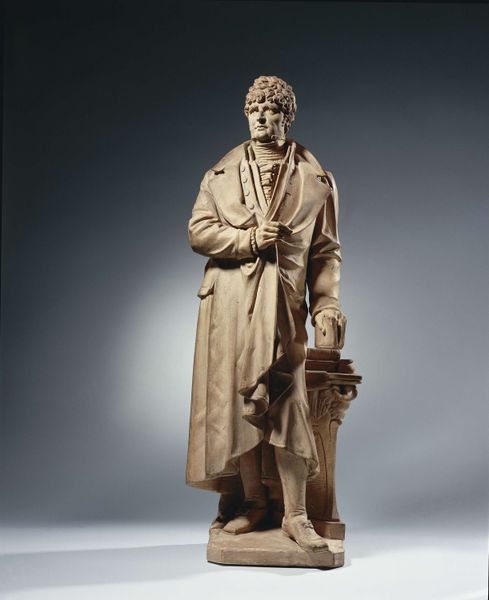
carving, sculpture, wood
#
portrait
#
carving
#
sculpture
#
figuration
#
sculpture
#
wood
#
history-painting
Dimensions: height 29 cm, width 13.5 cm, depth 11 cm
Copyright: Rijks Museum: Open Domain
This is Eugène Lacomblé’s clay sketch for a statue of Hugo de Groot, made in Belgium in the 19th century. De Groot, or Grotius, was a Dutch jurist in the 17th century whose writings on international law had a global impact. Lacomblé’s sketch represents not just a man, but also a symbol of national pride and intellectual authority. We see Grotius in the garb of a scholar, holding a book and standing confidently. This image was created during a period of nation-building, when public monuments were intended to inspire civic virtue and national unity. It reflects a desire to connect with a perceived golden age. Understanding this sketch involves considering the social and political functions of public art, and how institutions use images to shape cultural memory. Historians consult archives and visual culture to better understand the relationship between art, power, and society. Art then becomes a lens through which we can examine the values and aspirations of a particular time.
Comments
No comments
Be the first to comment and join the conversation on the ultimate creative platform.
